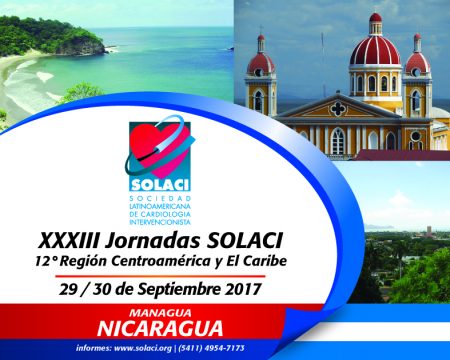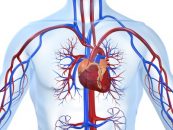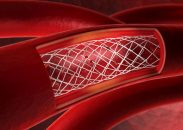Sponsored by Abbott Vascular LATAM 33rd SOLACI Regional Sessions – 12° Central America and the Caribbean Regional Meeting September 29th and 30th, 2017. Managua, Nicaragua. Case Submission: “Fostering Hemodynamics among Young Cardiologists”. It is with great pleasure that we hereby invite all young Latin American cardiologists specializing in hemodynamics to submit relevant clinical cases to the…
SOLACI CACI 2017 | When is the optimal timing for PCI: before or during TAVI
Read articles on the main presentations of the third day of SOLACI-CACI 2017 Congress. See the presentation by Dr. Conrad Simpfendorfer, entitled “When is the optimal timing for PCI: before or during TAVI”. We are interested in your opinion. Please, leave your comments, thoughts, questions, etc., below. They will be most welcome.
SOLACI CACI 2017 | Role of embolic protection during Transcatheter Aortic valve replacement
Read articles on the main presentations of the first day of SOLACI-CACI 2017 Congress. See the presentation by Dr. Samir Kapadia, entitled “Role of embolic protection during Transcatheter Aortic valve replacement”. We are interested in your opinion. Please, leave your comments, thoughts, questions, etc., below. They will be most welcome.
Clinical Significance of Collaterals in Chronic Total Occlusions
Collateral circulation develops during the gradual progression of coronary occlusions in order to replace the original artery and supply blood to areas jeopardized by ischemia. However, the relevance of collaterals has remained controversial for many years. Several works have suggested a rapid regression of collaterals after rechanneling of chronic total coronary occlusions, which could render…
How can we classify aortic stenosis in patients who underwent TAVR?
Courtesy of Dr. Carlos Fava. Aortic stenosis can present different hemodynamic patterns, such as low flow and low gradient with reduced or preserved ventricular function. However, evidence on the evolution of different hemodynamic patterns after transcatheter aortic valve replacement (TAVR) is limited. This study consisted in a retrospective analysis of 368 patients who underwent TAVR. The population was divided in…
Reciprocity agreement between ESVB and SOLACI
On behalf of all who make part of SOLACI, we are thrilled to announce a reciprocity and mutual collaboration agreement with the European Symposium of Vascular Biomaterials (ESVB). This association will allow us to create new relationships with important European professionals in the field and, in time, enhance and strengthen the presence of SOLACI worldwide. This year,…
Less volume, more mortality: should we be concerned?
Courtesy of Dr. Agustín Vecchia. In general, guidelines recommend a number of procedures a year for operators to maintain a reasonably safe level of proficiency. Even though this number is arbitrary and operators’ aptitude varies considerable, more than one publication has found an inverse correlation between procedure volume and outcomes. This study incorporated 10,496 operators…
SENTINEL study: cerebral protection during TAVR
Neurological complications during and after transcatheter aortic valve replacement (TAVR) are probably the only event whose incidence has not been reduced by new valve designs (as opposed to paravalvular leak, vascular complications, or need for pacemaker implantation). Aside from the potential seriousness of this clinical event, the risk of embolism is particularly worrisome because,…
TAVR presents less post-procedural MI than surgical aortic valve replacement
Courtesy of Dr. Carlos Fava. Surgical aortic valve replacement (SAVR) continues to be elective, but the presence of post-procedural acute myocardial infarction (AMI) has been associated to bad evolution. Despite the proven benefits of TAVR for high risk patients and the progress shown by patients of intermediate risk, the incidence of post implantation MI has…
Second-Generation DES Present Lower Mortality Rates for Vein Grafts
Courtesy of Dr. Carlos Fava. The treatment of vein graft lesions has always been difficult in relation to angioplasty, due to their characteristics. While drug-eluting stents (DES) have proven to be superior to bare-metal stents (BMS) for coronary arteries, such superiority is unclear as regards vein grafts. Several studies with first-generation DES (DES1) have even reported…
In-stent CTO: different prognosis from that of De Novo CTO?
Courtesy of Dr. Carlos Fava. Chronic Total Occlusions (CTO) are truly challenging and different technologies are being developed to treat them, but currently our most pressing questions about them are whether in-stent CTO present the same success rate as de novo CTO, and what their prognosis is. The present trial analyzed 899 CTO: 111(12.3%)…










